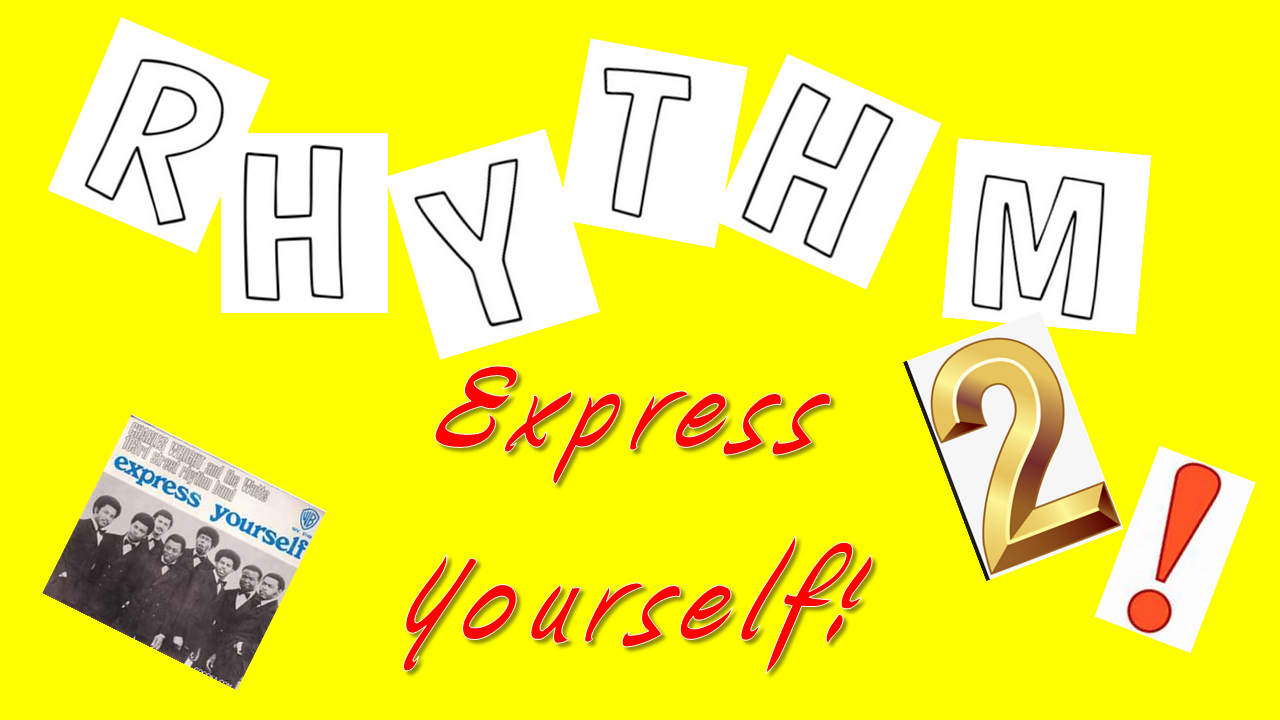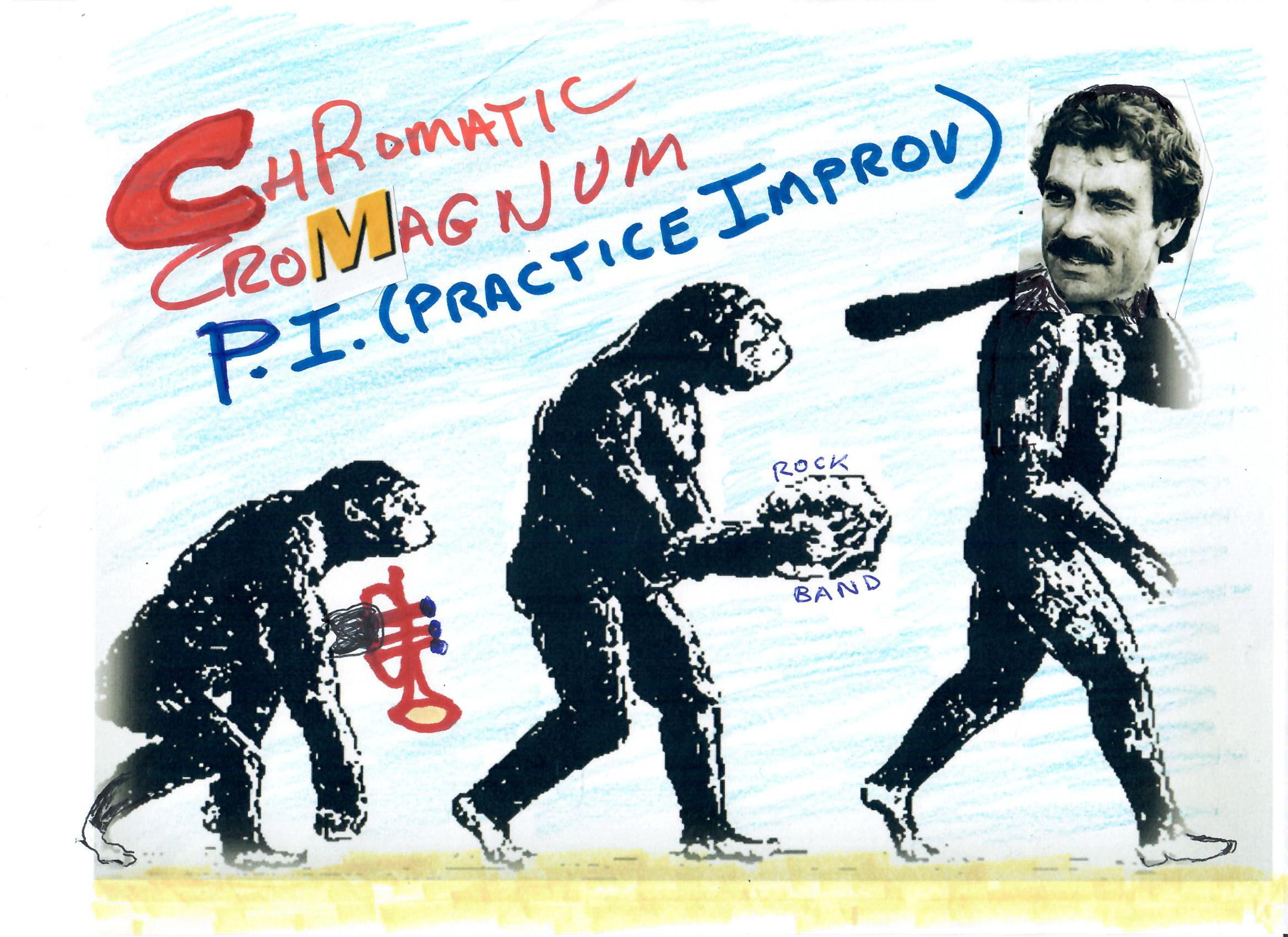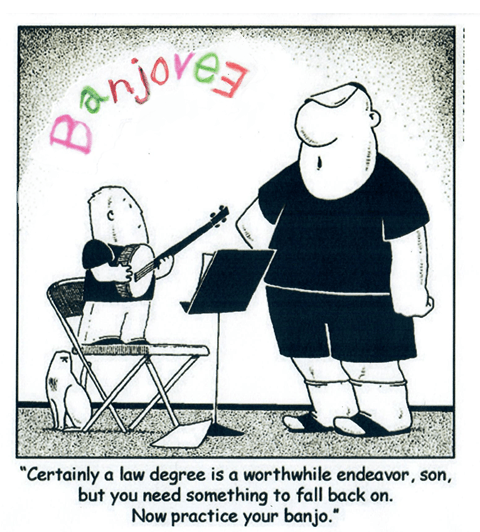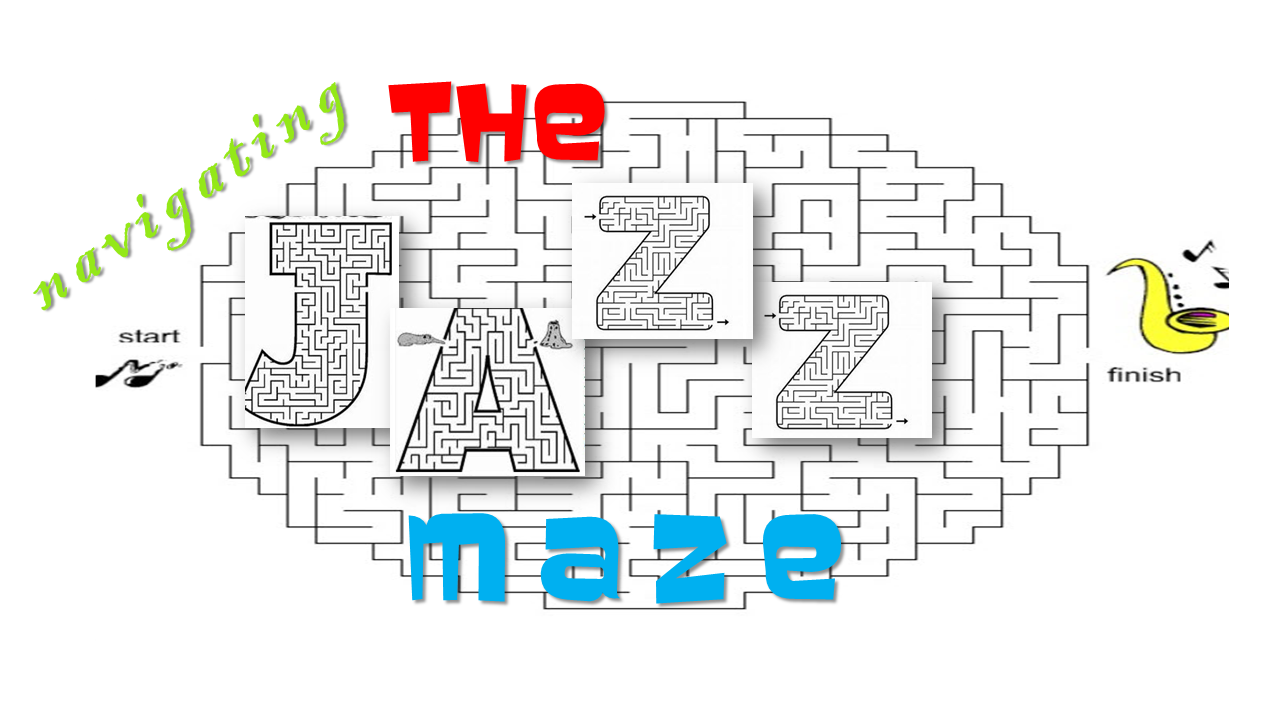 Pianist Dr. J. H. asked for a melodious exercise he could use to explore the harmonic minor scale in all 12 keys. The “harmonic minor scale” features the natural 6th degree FA along with the raised 7th degree. The raised 7th degree in a minor scale is the syllable known as “si” (pronounced “SEE”). It’s also referred to as “#SO” or “#7.” That scale is shown here:
Pianist Dr. J. H. asked for a melodious exercise he could use to explore the harmonic minor scale in all 12 keys. The “harmonic minor scale” features the natural 6th degree FA along with the raised 7th degree. The raised 7th degree in a minor scale is the syllable known as “si” (pronounced “SEE”). It’s also referred to as “#SO” or “#7.” That scale is shown here:
Tag: ad lib
I Dig This One !
 Does improvising bring you joy? If you’re playing music you love, both you and your audience will be swept up in that transcendent joy. Here’s a topsy-turvy, tangled up, spaghetti-shaped, four-bar phrase that just tickles my spirit every time I play it. Hope you dig it too. Click here to watch the video.
Does improvising bring you joy? If you’re playing music you love, both you and your audience will be swept up in that transcendent joy. Here’s a topsy-turvy, tangled up, spaghetti-shaped, four-bar phrase that just tickles my spirit every time I play it. Hope you dig it too. Click here to watch the video.
Fresh Out of Ideas
Tenor saxophonist Brooklyn brought a favorite tune to his lesson. As always, we typed the changes into Band in a Box, chose a tempo and a groove, and started blowing on the tune. But Brooklyn said he was having trouble coming up with fresh ideas to play over the changes.
Another Blues Scale
Click here to watch the video.
The blues idiom offered early twentieth century musicians a new way to share deep emotional feelings vigorously and honestly.
A hundred thirty years earlier, Mozart had reveled in the fresh, airy lightness of the major tonality which superseded stolid Renaissance modal forms around 1600.
Periodic innovations like these keep music vibrant and invigorating. Unfortunately, too many of today’s musicians bloat their playing with endless, unimaginative, repetitive blues licks. Sure, blues licks can add a funky edge, but overuse of these clichés leads to tiresome monotony.
(And so on, and so on….Well, you get the idea!)
Mixolydian ?? I’m Mixed Up !

This post defines the Mixolydian Mode and shows how you can use it in your music. Click here to watch the video.
Continue reading “Mixolydian ?? I’m Mixed Up !”
Rhythm 2: Express Yourself!

Swinging rhythms are the foundation and heartbeat of great jazz. Our first “Rhythm” video was a primer on how to play jazz rhythms. Click here to watch it.
In this video, we’ll talk about how you can use rhythm to effectively express yourself: your thoughts, your feelings, your personality, your unique story.
I feel so much more like I do now than I did when I first got here.*
Jazz gigs seldom turn out exactly as we expect them to. Since jazz is, by definition, an improvised art, this should come as no surprise. It’s a maze which often thrills, sometimes shatters, and continually amazes us.
Let’s say, for example, that you arrive at the gig late, stressed, un-showered, and unready to perform. It’s at this point that a fan drops a hundred dollar bill in the tip jar, Herbie Hancock asks to sit in, and your first solo provokes a standing ovation. In your dreams, right?
The nature of jazz will, at times, lead to the unexpected, to exciting innovation, to surprise, to joyful discovery. …Occasionally, it leads nowhere. After all, life’s mazes do include blind alleys. Just the same, we “press on regardless” (as my father often preached on rainy hikes), in search of the perfect note, aye? Continue reading “I feel so much more like I do now than I did when I first got here.*”
Chromatic Cro-Magnum P.I. (Practice Improv)
 Ever feel totally drained after a big gig with no steam left to practice, like a malnourished Cro-Magnon? That’s how I felt this morning, after last night’s intense concert backing up my friend presenting 14 of his complex original compositions.
Ever feel totally drained after a big gig with no steam left to practice, like a malnourished Cro-Magnon? That’s how I felt this morning, after last night’s intense concert backing up my friend presenting 14 of his complex original compositions.
What’s a person to do? Well, “one foot in front of the other,” as the old saying goes. Just start blowing long tones; dig the sound of the horn, experience the feeling of wind on reed, fingers on pearls.
Here’s what emerged after an hour or so; a little chromatic meander that caught my imagination. As harmonized in this sketch, it forms a Dorian setting reminiscent of “So What,” “Little Sunflower,” “Jeanine,” or “Invitation.” It could also have been harmonized as a ii-V progression in C major modulating to D minor.

Click on “continue reading” below to see a chart and hear the recording in all 12 keys.
Continue reading “Chromatic Cro-Magnum P.I. (Practice Improv)”
Compose, Improvise, Practice: Three Birds, One Stone!

Do you ever NOT feel like practicing? If your go-to staple is a dry method book, you’ll probably answer “yes” – if you’re really honest.
On the other hand, if you dream of becoming an inventive improviser or an innovative composer, then read on!
Continue reading “Compose, Improvise, Practice: Three Birds, One Stone! “
Band Bus Banter
On the band bus one day, a buddy criticized me for playing too many descending lines. According to him, “Descending is negative; Ascending lines are much more uplifting.” Oh….really?
Players constantly hear advice like that.
Another commentator assured me, “Your phrase cannot EVER begin on the downbeat; It’s got to be asymmetric.” OK, you win, asymmetric it is, smart guy! The customer’s always right, ay?
One nameless critic insisted, “In order to sound hip, your line has to include several non-harmonic tones.” Still another self-proclaimed “authority” touted the need to stuff many rhythmic devices into your phrase.
Finally, a laconic trombonist named Tex snoring in the back of the bus roused himself from slumber just long enough to drawl lazily,
“How a – bout we try ta swing, Stan?”
So what do you think?
What is it that makes a player sound fresh and innovative?
While listening to the masters and practicing, lines like this one seem to pop out of nowhere. Hit ► below and let me know if it works for you.
Click on “continue reading” below to see a chart in all 12 keys. Or download “New Ears Resolution” to supercharge your ear, so you can play licks like this one in all 12 keys without a chart.
Continue reading “Band Bus Banter”The Lost Chord
Andy and i were playing this lick the other day.

Andy asked with which chord this lick could be used. I had no answer. Do you?
Got Improv?
You can learn how to improvise like a professional jazz musician! Watch this video to see how you can begin the exciting journey towards becoming a jazz improviser.
RIPPING RIFFS OR MEMORABLE MELODIES?
 Craig wrote this article for the February, 2016 issue of Saxophone Life Magazine. It appears here courtesy of SLM.
Craig wrote this article for the February, 2016 issue of Saxophone Life Magazine. It appears here courtesy of SLM.
It’s definitely impressive to hear jazz musicians improvise at incredibly fast tempos. What is, however, far more inspiring is hearing how the great masters are able to create beautifully crafted, swinging melodic lines, regardless of tempo. Continue reading “RIPPING RIFFS OR MEMORABLE MELODIES?”
Darn That Dexter!
 Dexter Gordon is universally revered by saxophonists for his muscular sound. He is equally effective on ballads, blues, and fast tempos.
Dexter Gordon is universally revered by saxophonists for his muscular sound. He is equally effective on ballads, blues, and fast tempos.
His Blue Note LP One Flight Up includes a fine reading of the Jimmy Van Heusen ballad “Darn That Dream” on which he dexterously employs a device favored by Charlie Parker. This maneuver involves momentarily raising the key a half-step and inferring a ii-V progression in that key.
Here are two instances in which Dexter deftly employs that ploy. As anyone who has ever tried to transcribe his solos knows, one of the hallmarks of Dexter’s style is his unique approach to rhythm. While his languid phrasing is pure joy to hear, it’s a nightmare to transcribe. I have greatly simplified the rhythm in these two examples, focusing instead on the pitches Dexter chose for the brief modulation. Continue reading “Darn That Dexter!”
“Remember” Hank Mobley’s “Soul Station”?
 The road to dynamic, expressive improvisation is paved with practice and listening. Hank Mobley’s near perfect solo on Irving Berlin’s “Remember” from his classic LP “Soul Station” is filled with profound lessons on phrasing, rhythm, tone, melody, pacing, and development. Here is just one of the great ideas you will encounter when studying this wonderful recording.
The road to dynamic, expressive improvisation is paved with practice and listening. Hank Mobley’s near perfect solo on Irving Berlin’s “Remember” from his classic LP “Soul Station” is filled with profound lessons on phrasing, rhythm, tone, melody, pacing, and development. Here is just one of the great ideas you will encounter when studying this wonderful recording.
 As always, we recommend learning the phrase in all 12 keys. Practice with the audio file found below. Continue reading ““Remember” Hank Mobley’s “Soul Station”?”
As always, we recommend learning the phrase in all 12 keys. Practice with the audio file found below. Continue reading ““Remember” Hank Mobley’s “Soul Station”?”
Why Is This Tune So Hard To Memorize?
Have you ever had difficulty playing a tune, even though it presented no obvious technical hurdles? Perhaps the problem lies in a hidden harmonic riddle, which, when solved, will unlock your understanding of the song and make it easier to play and to remember.
At a recent gig, pianist Mark Schecter called off Dizzy Gillespie’s “Groovin’ High.” Although Storyville used to play the song, it still made me stumble. However, after deciphering its harmonic implications, playing it became simple.
Here’s how to solve a riddle like that.
How to Learn Songs
Is there a more effective, efficient method for learning and retaining a large repertoire of jazz standards? Continue reading “How to Learn Songs”
Thematic Development Galvanizes Your Solos
 Do your solos brim with vitality, gliding across a colorful landscape, as you explore ever deeper into the ocean of sound? Or do you flounder among waves of notes, swimming through a maze of chord changes?
Do your solos brim with vitality, gliding across a colorful landscape, as you explore ever deeper into the ocean of sound? Or do you flounder among waves of notes, swimming through a maze of chord changes?
 Thematic development will transform your playing, as you weave your exciting, personal story.
Thematic development will transform your playing, as you weave your exciting, personal story.
The following clips illustrate three powerful tools to stimulate your creative potential and enthuse your audience.
1. RHYTHMIC SHIFT – Example 1 presents a 7-beat phrase that starts on the “and” of beat 3. The phrase is then repeated, but this time, it begins on the “and” of beat 2. Repeating the phrase gives your thought unity, while the rhythmic offset offers variety and surprise. Try playing along with this recording in all 12 keys.
2. DIMINUTION – In example 2, the 7-beat phrase is the same, but a triplet compresses the second statement of the theme. Your motif is still easily recognized, but you have added variety.
3. TONAL SHIFT – In Example 3, the second statement of the theme modulates up a minor third. Tonal shift was a favorite device of John Coltrane. The listener still recognizes your theme, but her ear delights in this fresh new element you have added to the mix.
As you become more comfortable with creating and developing thematic material, your unique personality defines your individual style. You improvise dynamically and coherently.
To master these 3 techniques, play along with the 3 audio files offered here. Contact me, if you need a chart. Or, if you want to learn to play by ear in all 12 keys (as I did while recording these clips), download “New Ears Resolution” and liberate your musical imagination!
Do You Enjoy Practicing Scales?
How often do we teachers hear students complain about having to practice long tones and scales? Every teacher knows that long tones greatly enhance tonal quality and intonation and that scales are the raw material from which improvised solos are crafted. The problem is that any musician who practices being bored will bore the audience. What you practice is what you perform. Practice joy, imagination, and freshness, and your show will be fresh. Practice dry technique, and your gig will be a desert.
Below is a 4-bar phrase containing a descending major scale (Ionian mode) and an ascending Mixolydian mode. I worked on this exercise until the rhythm and note sequence started to feel interesting to me.
Try playing along with the background track provided below and see if this approach adds a bit of zest to your practice time. Develop your own variations on this idea. Email me for a FREE copy of this exercise in all 12 keys, if you have trouble figuring it out. Better yet, download “New Ears Resolution” and learn how to play any melody in any key by ear.
Happy New Year, Sonny Rollins!
What a great way to ring in 2015! We watched “Labor Day” on Netflix, and then I revisited Sonny Rollins’ 1998 CD “Global Warming.” Sonny has a wonderful ability to compose simple melodies that swing. And, of course, the unique way he develops motivic material during his solos is legendary. Solos brimming over with life and joy. I just had to pick up my horn and play along. Here is the lick that emerged, Adolph Sax’s new year’s gift.
 Try playing along with this melodic minor phrase in all 12 keys using this background track. If you have trouble transposing it, email me for a free chart. Or download “New Ears Resolution” and learn how to play any melody in any key by ear.
Try playing along with this melodic minor phrase in all 12 keys using this background track. If you have trouble transposing it, email me for a free chart. Or download “New Ears Resolution” and learn how to play any melody in any key by ear.
You Can Learn to Play by Ear with “New Ears Resolution”
New Ears Resolution has helped hundreds of musicians learn to play by ear over the past 15 years. And now, the Second Edition offers scores of new innovations designed to make your learning experience more enjoyable, effective, and thorough.
Download “New Ears Resolution” for just $9.99. Click here.
OR Purchase the physical book and CD via PayPal for just $19.99 plus shipping. Click here.
 Whether you work with a jazz combo, rock group, or big band, or just play for your own pleasure, “New Ears Resolution” will help you become the musician you have always wanted to be.
Whether you work with a jazz combo, rock group, or big band, or just play for your own pleasure, “New Ears Resolution” will help you become the musician you have always wanted to be.
i’ve taught this method for years and have used it in my own performances. i’ve researched extensively in order to improve its design and have thus developed a comprehensive approach to the art of playing by ear.
HOW IS “NEW EARS” DIFFERENT FROM OTHER METHODS?
Continue reading “You Can Learn to Play by Ear with “New Ears Resolution””










